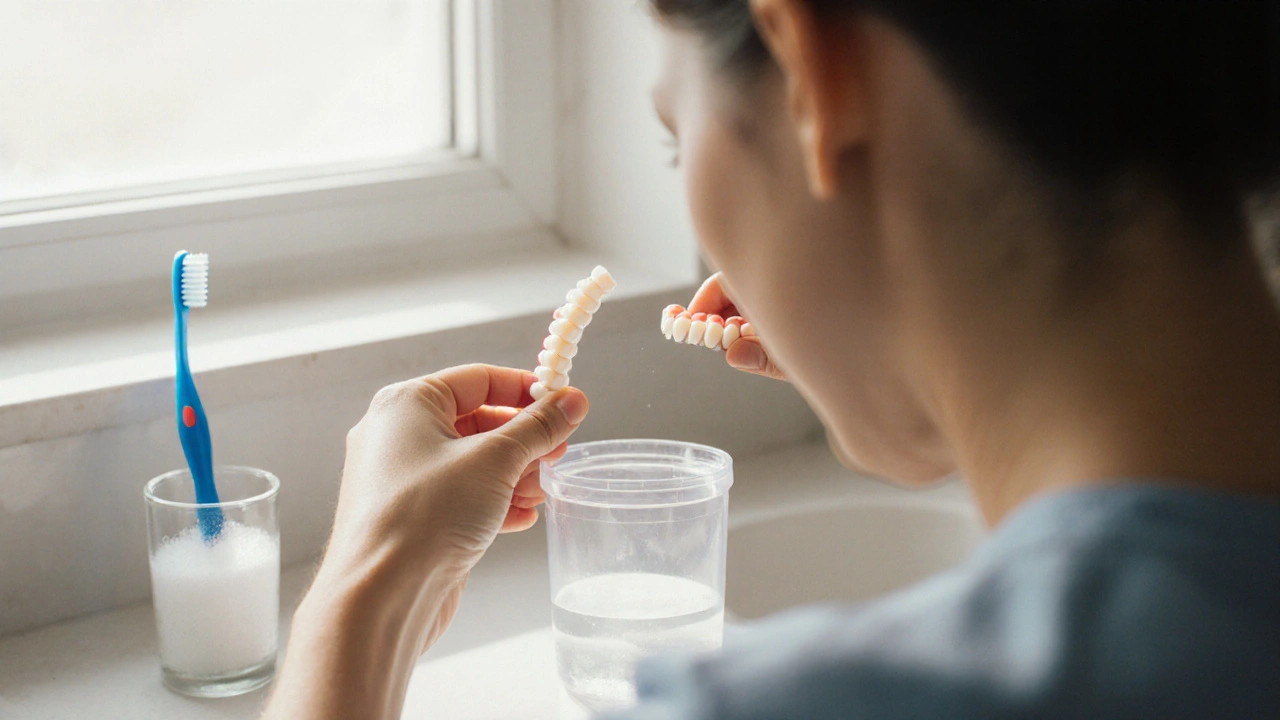
Jak přilepit zubní můstek - krok za krokem a co dělat, když vám spadl
Když vám spadl zubní můstek, neřešte ho sami. Zjistěte, proč se uvolňuje, co dělat hned teď a jak se vyhnout opakování. Víte, kdy je čas přemýšlet o implantátech?
When you lose a tooth, your mouth doesn’t just lose a piece of enamel—it loses function, balance, and confidence. A zubní můstek, trvalá zubní náhrada, která nahrazuje chybějící zub nebo zuby pomocí sousedních zubů jako opory. Also known as zubní protéza, it is a fixed solution that restores your bite, prevents shifting teeth, and gives you back a complete smile without surgery. Unlike removable dentures, a zubní můstek is cemented in place and feels like your own teeth. But it’s not the only option—and not always the best one.
Many people think a zubní můstek is the go-to fix after losing a tooth, but it’s not that simple. The můstek relies on healthy adjacent teeth to hold it in place. That means those teeth must be filed down to fit crowns, even if they’re perfectly fine. This is a permanent change. If those supporting teeth get damaged later, the whole můstek can fail. That’s why many dentists now recommend zubní implantáty, kovové šrouby v čelisti, které slouží jako nový kořen pro umělý zub. Also known as implantace zubů, they don’t require grinding down healthy teeth and help preserve jawbone. But implants take months and cost more. A zubní můstek can be done in just two visits. So if you need a quick fix, have weak bone structure, or want to avoid surgery, the můstek still makes sense.
And what about the long-term? A well-made zubní můstek can last 10 to 15 years—if you care for it. Brushing and flossing around it is harder than with natural teeth. You need special floss threaders or interdental brushes. If you skip this, plaque builds up under the bridge, leading to decay on the supporting teeth. That’s why many people who got a můstek 10 years ago now need new crowns or even implants because the original teeth underneath got damaged.
Some think a zubní můstek is just about looks. But it’s not. Missing teeth change how you chew, which affects digestion. They cause other teeth to shift, creating gaps and bite problems. A zubní můstek stops that chain reaction. But it’s not a magic fix. It’s a tool—and like any tool, it works best when used for the right job.
In the posts below, you’ll find real advice from people who’ve been there: how to tell if your můstek is failing, why some dentists push it even when implants are better, what to expect during the procedure, and how to make it last. You’ll also see comparisons with other options—like how a zubní můstek stacks up against zubní protéza or ztráta zubu solutions. No fluff. Just what you need to decide without regret.

Když vám spadl zubní můstek, neřešte ho sami. Zjistěte, proč se uvolňuje, co dělat hned teď a jak se vyhnout opakování. Víte, kdy je čas přemýšlet o implantátech?